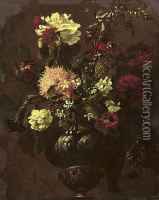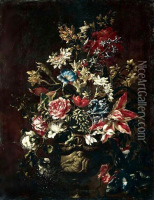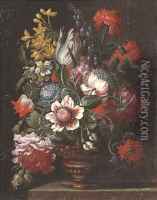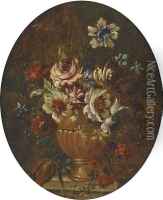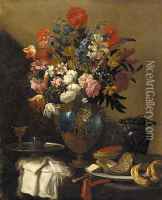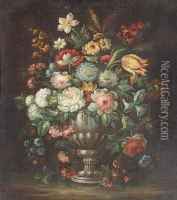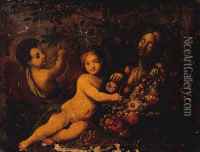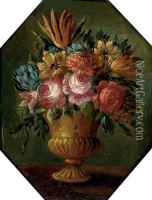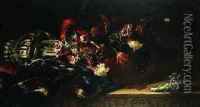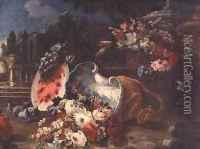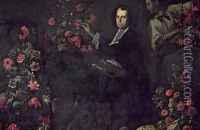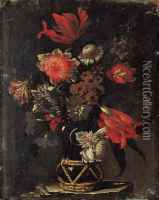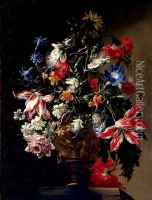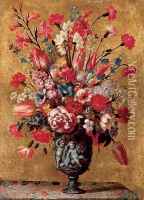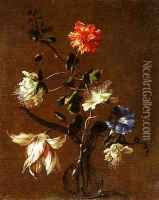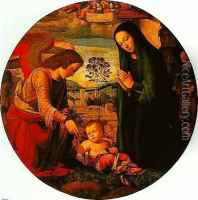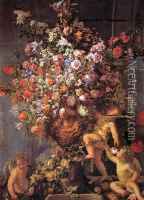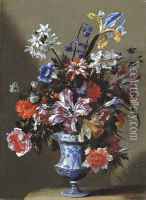dei Fiori (Nuzzi) Mario Paintings
Mario dei Fiori, born Mario Nuzzi in 1603, was an Italian painter who specialized in still life paintings, particularly those depicting flowers, which is why he was nicknamed 'Mario dei Fiori' or 'Mario of the Flowers.' He was born in Penna in Teverina, near Todi, in the region of Umbria. Nuzzi was one of the most prominent still life painters of the Roman school during the Baroque period. He trained under his uncle, Tommaso Salini, who was also a painter and likely helped him develop his interest in floral still lifes.
Throughout his career, Nuzzi collaborated with several other artists of his time. He often painted the floral elements in compositions while other artists, such as Pietro da Cortona and Andrea Sacchi, would contribute figures or architectural elements. This collaborative approach was common in the 17th century, allowing artists to focus on their specific strengths.
Mario dei Fiori's work was highly regarded for its naturalistic representation of flowers, rich color palette, and intricate composition. He played a significant role in the development of the still life genre in Italy, influencing many contemporaries and successors. His paintings were sought after by wealthy patrons, including members of the Roman aristocracy and the Vatican.
The artist's legacy was somewhat overshadowed by the works of other Baroque artists until the 20th century, when art historians began to reassess the still life genre and recognize its importance in the history of art. Today, Mario dei Fiori is celebrated for his contributions to the development of still life painting in Italy. His works can be found in various museums and art collections worldwide.
Mario dei Fiori's death occurred in 1673 in Rome, where he had spent most of his professional life. His paintings continue to be admired for their beauty and technical skill, and they serve as an important record of 17th-century botanical knowledge and the cultural significance of flowers in that era.
